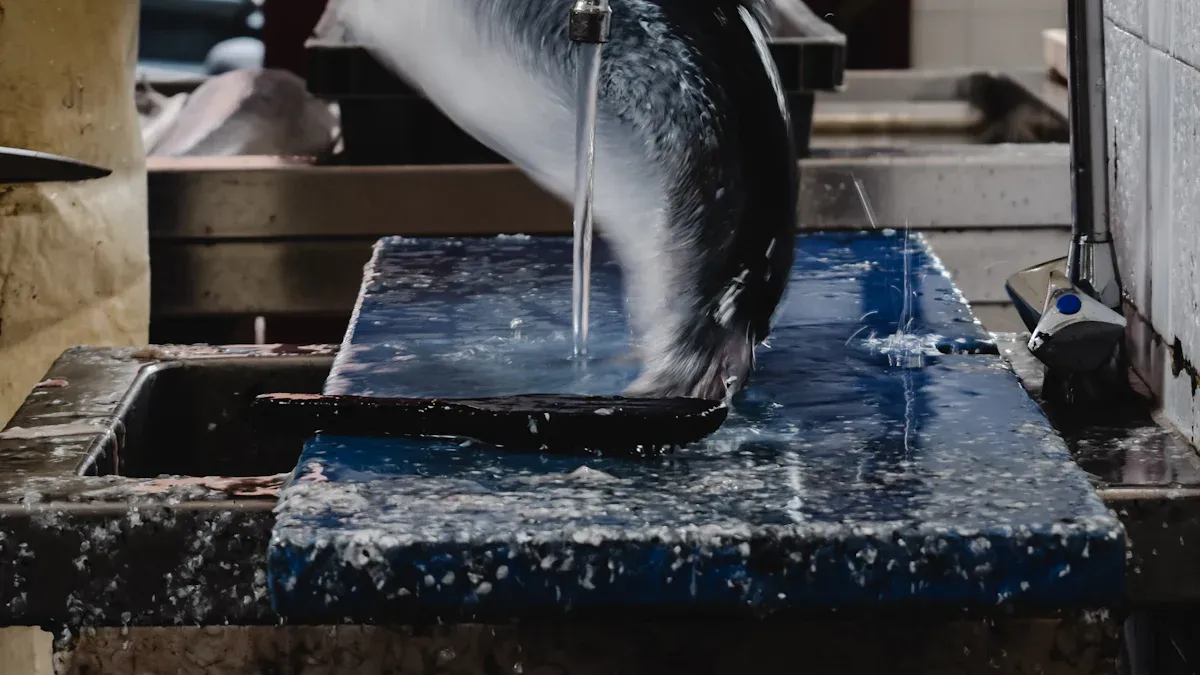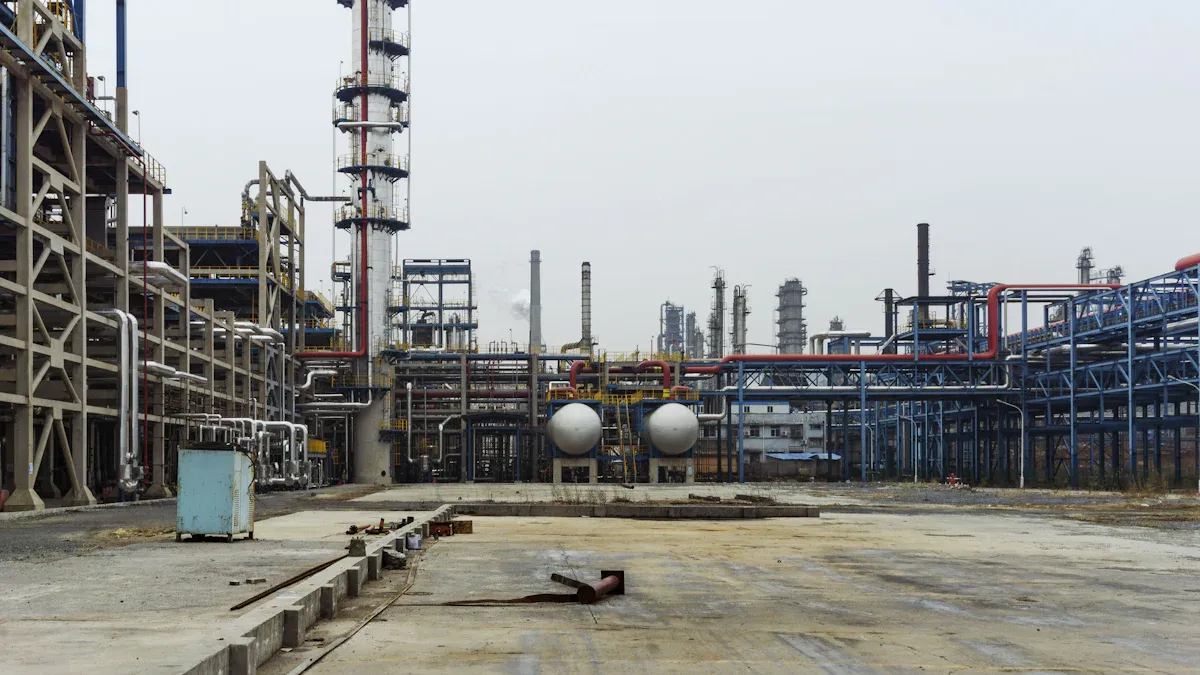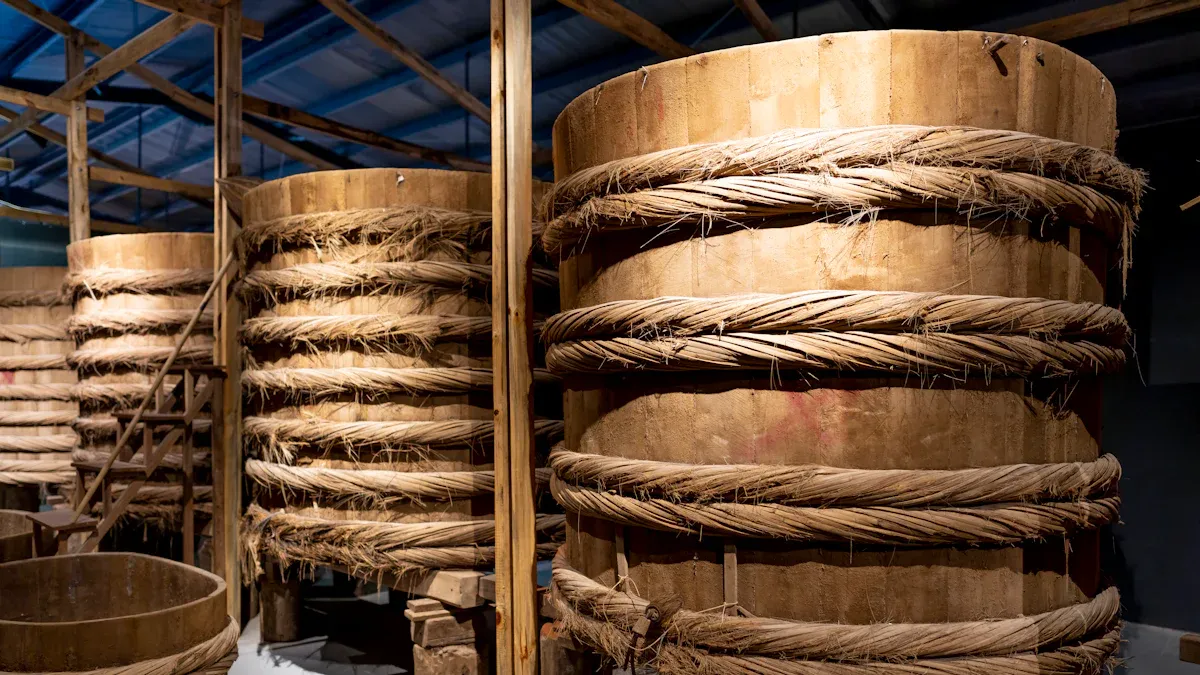
A Drum Fish Oil Centrifuge Separator Machine harnesses centrifugal force to efficiently separate fish oil from water and solid particles. This technology streamlines industrial processes, allowing manufacturers to achieve higher purity and consistency in fish oil products. Operators rely on its precision to enhance both productivity and product quality.
Key Takeaways
- Drum Fish Oil Centrifuge Separator Machines use powerful spinning to quickly and efficiently separate fish oil from water and solids, improving product purity and production speed.
- These machines run continuously with low maintenance, adapt to different fish types, and use automation to ensure consistent quality and reduce manual work.
- Besides fish oil, the machines serve many industries like food, pharmaceuticals, and waste treatment, offering versatile, durable, and cost-effective solutions.
Drum Fish Oil Centrifuge Separator Machine: How It Works

Definition and Main Components
A Drum Fish Oil Centrifuge Separator Machine is a specialized industrial device designed to separate fish oil from water and solid particles using centrifugal force. This machine plays a crucial role in fish oil production lines, ensuring high purity and efficiency. The main components include:
| Component | Description |
|---|---|
| Drum | Stainless steel rotating vessel where separation occurs |
| Inlet and Outlet | Mechanisms for feeding raw material and discharging separated phases |
| Vertical Shaft | Transfers rotational force to the drum |
| Horizontal Shaft | Supports the drum and maintains stability |
| Machine Cover | Protects internal mechanisms and ensures safety |
| Hydraulic System | Controls the discharge of separated solids and liquids |
| PLC Control System | Automates operation and monitors performance |
All material-contacting parts use stainless steel to prevent corrosion and meet hygiene standards. The drum’s high-speed rotation, reaching up to 16,300 rpm, creates a powerful centrifugal field. The machine also features a dynamically balanced bowl for stable, low-vibration operation. Models vary in rated capacity, inlet and outlet pressure, and power, allowing adaptation to different processing requirements.
Step-by-Step Operation Process
The operation of a Drum Fish Oil Centrifuge Separator Machine follows a systematic workflow:
- Feeding: Operators introduce a mixture of fish leftovers, water, and oil into the machine through the bottom feeding mechanism.
- Acceleration: The drum spins at high speed, generating centrifugal force up to 20,000 times gravity. This force rapidly separates components based on density.
- Separation:
- Heavier solids move outward and collect along the drum wall.
- The lighter fish oil and water phases stratify, with oil forming an inner layer and water remaining closer to the drum wall.
- A vertical stack of conical disks inside the drum increases the separation surface area, enhancing efficiency.
- Discharge:
- The machine uses centripetal pumps to discharge the separated oil and water through different outlets.
- Solids are expelled through a controlled discharge system, often using a hydraulic mechanism.
- Polishing: In some setups, a secondary polishing centrifuge removes fine suspended particles and residual water, producing high-purity fish oil.
Tip: Operators can adjust the speed of the screw conveyor and the depth of the liquid pool to optimize separation for different raw materials.
The process relies on the principle that components with different densities sediment at varying speeds under centrifugal force. This method accelerates stratification, achieving efficient separation much faster than gravity-based methods.
Key Features and Advantages
The Drum Fish Oil Centrifuge Separator Machine offers several technical and operational advantages:
- High Separation Efficiency: Machines achieve separation efficiencies of 99% or higher, thanks to high-speed rotation and advanced disk stack designs.
- Continuous Operation: The process runs continuously, handling large volumes (up to 15,000 L/h) and reducing downtime.
- Versatility: The machine accommodates a wide range of solid particle sizes and slurry concentrations, making it suitable for various fish species and processing conditions.
- Durability: Use of abrasion-resistant stainless steel and replaceable liners ensures long service life, even in harsh environments.
- Low Maintenance: Few moving parts and the absence of filter elements minimize maintenance needs and reduce operational costs.
- Automation: PLC control systems and industrial computers enable precise monitoring, overload protection, and easy operation.
- Superior Product Quality: The machine removes fine particles and water more effectively than traditional gravity methods, resulting in higher purity fish oil.
- Centrifugal separators outperform gravity-based methods by providing faster, continuous separation and lower energy consumption.
- Adjustable centrifugal forces allow operators to tailor the process to specific industrial needs, optimizing both yield and quality.
- Industry benchmarks confirm that these machines deliver reliable performance in commercial fish and meat processing, justifying their investment through improved efficiency and product quality.
Drum Fish Oil Centrifuge Separator Machine: Industrial Applications

Fish Oil Production
Manufacturers rely on the Drum Fish Oil Centrifuge Separator Machine to streamline fish oil extraction. This equipment separates oil from water and solids with high efficiency, ensuring consistent product quality. Operators monitor processing temperatures to stay below 90°C, which preserves the nutritional value of omega-3 fatty acids and prevents harmful bacteria growth. Strict hygiene standards and traceability systems track fish oil from raw material to finished product, meeting international safety requirements. The machine’s advanced design, including dynamic load absorption and high-quality bearings, supports stable and reliable operation in demanding production environments.
Food Processing and Pharmaceutical Uses
The food industry uses these machines for more than just fish oil. They clarify juices, recover brewing byproducts, and extract plant proteins. Pharmaceutical companies value the purity and stability of fish oil produced by these machines, which meet strict standards for contaminants and toxins. Quality assurance frameworks, such as HACCP and ISO 19011:2002, guide the entire process. Sensitive testing ensures that only fish-derived oil enters the supply chain, protecting consumers and supporting regulatory compliance.
Note: Fat stability and purity remain top priorities in both food and pharmaceutical applications. Antioxidants like ethoxyquin help prevent oxidation, while external inspections verify compliance with safety standards.
Waste Management and Other Industries
Drum Fish Oil Centrifuge Separator Machines also serve environmental and industrial sectors. Facilities use them for wastewater treatment, sludge processing, and industrial effluent handling. The machines’ interchangeable parts and easy maintenance features improve uptime and operational efficiency. Their wide range of models, with capacities from 0.5 to 120 m³/h, allows adaptation to various scales and industries, including chemical processing, petroleum refining, and even salt and manure production.
A Drum Fish Oil Centrifuge Separator Machine simplifies fish oil extraction. Operators follow clear steps: feeding, separation, and discharge.
- Boosts efficiency
- Delivers high product purity
- Reduces manual labor
This technology streamlines industrial processes and ensures consistent quality in every batch.
FAQ
What maintenance does a Drum Fish Oil Centrifuge Separator Machine require?
Operators should inspect seals, lubricate bearings, and check for wear on critical parts. Regular cleaning ensures optimal performance and extends machine lifespan.
Can the machine process different types of fish?
Yes. The machine adapts to various fish species and raw materials. Adjustable settings allow operators to optimize separation for different production requirements.
How does automation improve operation?
Automation enables precise control, real-time monitoring, and overload protection. Operators benefit from reduced manual intervention and consistent product quality.
Post time: Jun-23-2025

